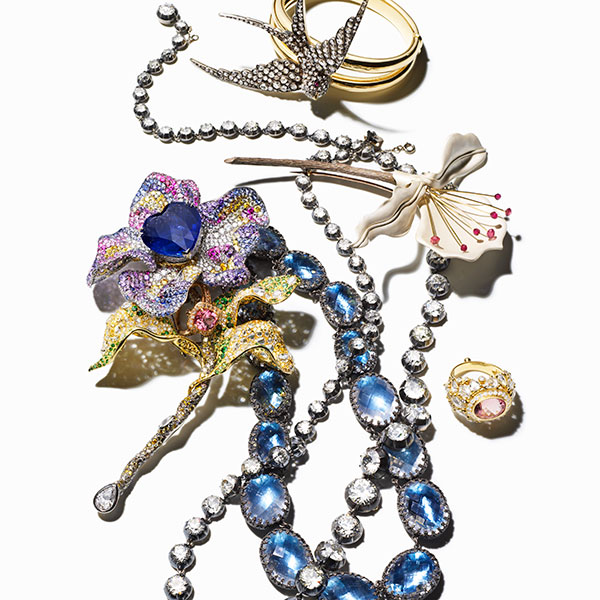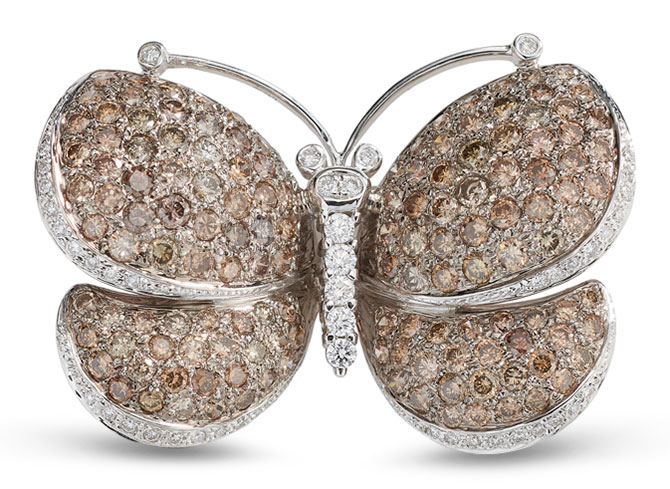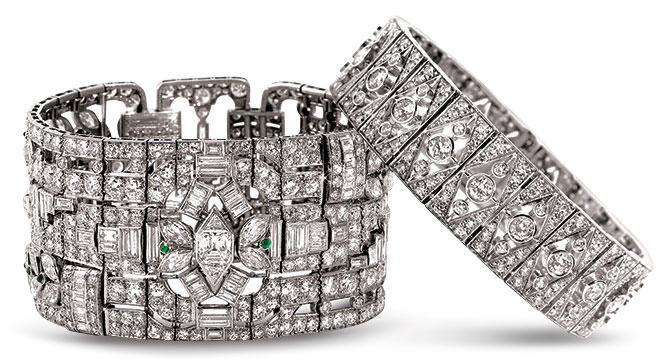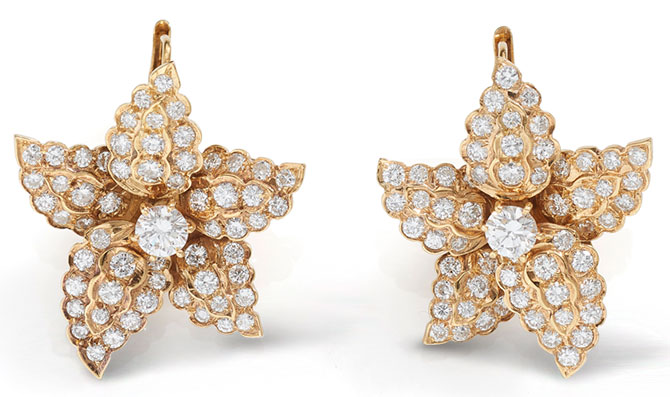
Buying and selling pre-owned jewelry is a lucrative business that could complement your contemporary sales—as long as you know what you’re doing
When it comes to jewelry and watches, used doesn’t have the same pejorative connotation as it does with other categories of consumer goods like cars or clothing. The secondhand market can be creatively satisfying and financially lucrative for jewelers, but it does demand an investment in time, effort, and education.
The Terminology: Words to Know

Beneficial Estate Buyers; 800-518-1137; beneficialestatebuyers.com
For a neophyte, the terms used to describe this category can seem confusing. But not even the experts are consistent in how they use the terminology.
The broad catchall terms are pre-owned and secondhand, which refer to both contemporary and older pieces. These two words sometimes are conflated with the term estate jewelry, but some experts prefer to reserve that term for secondhand goods with a high degree of rarity, refinement, and provenance.
“Today, estate tends to mean jewelry with a history, provenance, a brand name, a signed piece that can be researched,” says Andrew Block, president and partner at TrueFacet, an online platform for pre-owned jewelry and watch sales.
Some pros use the estate label for all old, pre-owned jewelry, while others switch to the term antique to designate pieces more than 100 years old.
Vintage is another term that can mean some, or all, of the above. “Vintage started out just referring to something previously owned,” Block says. “As the supply changed from truly vintage to more contemporary, we just called it pre-owned.”
Buying: Building a Specialized Skill

Buying estate jewelry is a highly specialized skill, and there isn’t an industry standard for learning how to do it well. Experts JCK spoke with honed their craft over years, sometimes decades, often acquiring their knowledge as it was passed down through generations.
“I always had my dad [co-owner Jim Rosenheim] as a mentor,” says Matthew Rosenheim, co-owner and president of Washington, D.C.’s Tiny Jewel Box. “We looked at workmanship and craftsmanship, the type of stones.”
The ability to evaluate the authenticity of precious metals and gemstones is the most important skill when buying estate jewelry, with the expertise to authenticate the designer running a close second. “Today, there are a huge amount of reproductions out there and signatures that are not kosher, and those are tricky waters to navigate,” Rosenheim says. “It takes some experience.”
Beyond that, most of the value in estate jewelry is in the style and brand name, which makes valuing these pieces as much about art as science, says John Colasacco, specialist in the fine jewelry department at Boston-based auction house Skinner: “Once you figure out what you’ve got and then figure out where it’s from and all the pieces, you put it together. It’s a little puzzle, and it’s not always so simple.”
If you want to get into the estate market, experts advise having one or two employees who specialize in the category act as buyers; you simply won’t be able to equip your entire sales staff with the required depth of knowledge. An astute buyer needs a foundation of gemological knowledge; historical knowledge (Which metals were in use when? In what era were certain stonecutting techniques developed?); and an eye trained to recognize details that indicate if a piece is, for instance, from the Victorian, Edwardian, or Art Nouveau period.
Buying over the counter—that is, from the public—can yield high margins for jewelers who do so strategically. “When we’re buying, we’re wholesalers; when we’re selling, we’re retailers,” says Don Walsh, estate buying manager at Waterbury, Conn.–based Michaels Jewelers.
Jewelers who buy pre-owned jewelry OTC find that many of the items they see do not qualify as estate jewelry. Walsh says with most of the contemporary pieces customers come in hoping to sell, the only inherent value is in the material itself. “We see an awful lot of jewelry coming from online and TV channels and major chains, and a lot of it we can only buy for gold value.”
Buying and selling pre-owned watches can be especially tricky, Walsh says. In general, he and other experienced jewelers know it’s best to stick to timepieces in good working order. “We try to be careful with watches because the upkeep of them could get costly because they’re such complicated movements,” he says.
Selling: Where, When, and How

Each of the 10 Michaels Jewelers stores has a display case dedicated to estate jewelry, but the big sales driver is a series of semiannual trunk shows. “When you send them an invitation to come to this estate show that’s only two times a year, it does create a sense of urgency for customers to come in,” Walsh says.
Estate jewelry experts say the way to transform customer interest into sales is making sure your sales staff is familiar with the major periods popular with estate jewelry collectors, and the materials, styles, and shapes emblematic of those stylistic eras. “You’d want them to be versed in certainly the different periods of jewelry, different historical periods,” Colasacco says.
While there isn’t a standard curriculum, per se, estate specialists cite a number of sources that can deliver some of this education. “The best resource can be a brand itself or the auction houses,” Block says. Auction catalogs published by big names like Christie’s, Sotheby’s, and Skinner are packed with descriptions, photos, provenance, and prices, and top brands like Tiffany & Co. and Cartier have a wealth of information available about their respective histories.
Conferences and shows also provide important education. “A big antique show is a great laboratory,” Rosenheim says. “If I was a retail salesperson, I’d want to look at books, too, but there’s nothing that substitutes for touching and feeling the jewelry itself and talking to educated dealers.”
Along with an educated staff, the other key ingredient to a successful sale is emphasizing the history and unique nature of the piece your customer is buying. “It’s not new jewelry that everyone else is going to have,” Colasacco says. “What we always explain to our clients is that there’s a romance about these pieces—they have history. There’s a depth to them, there’s something fascinating about them.”
Estate jewelry also can appeal to consumers who want to wear ethically and sustainably sourced jewelry. “It’s one of the best ways of recycling; you’re not mining anything because it’s already been mined,” Colasacco says. “People are very aware of that these days.”
And unlike many contemporary pieces that online competitors can sell, undercutting brick-and-mortar retailers on price, estate jewelry can’t be commoditized. That’s the most valuable attribute of all. Says Rosenheim: “It’s nice to be selling one-of-a-kind items because if a client falls in love with it, there’s not another one.”
(Top: Stephen Lewis/Art and Commerce)